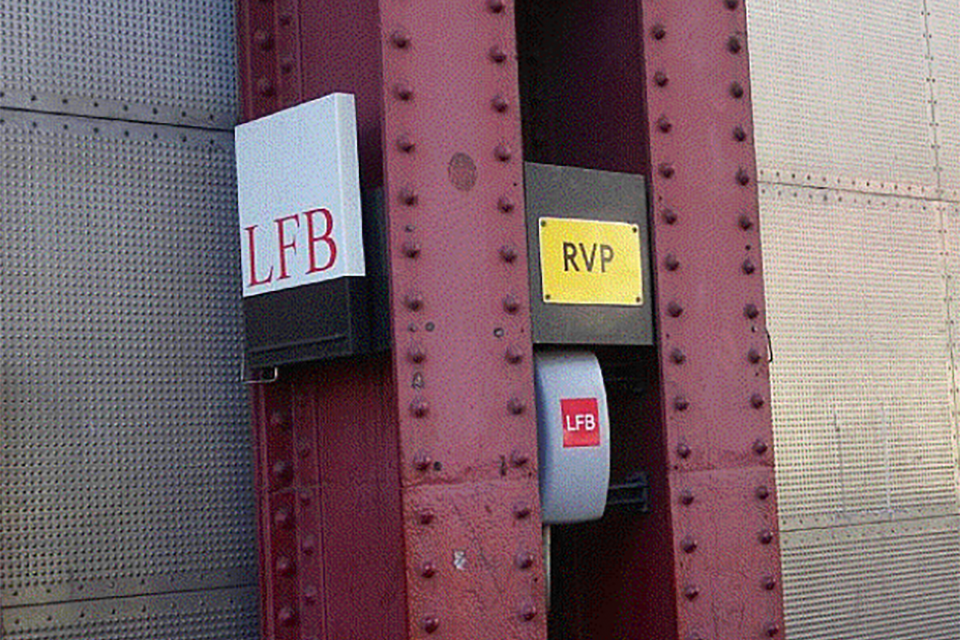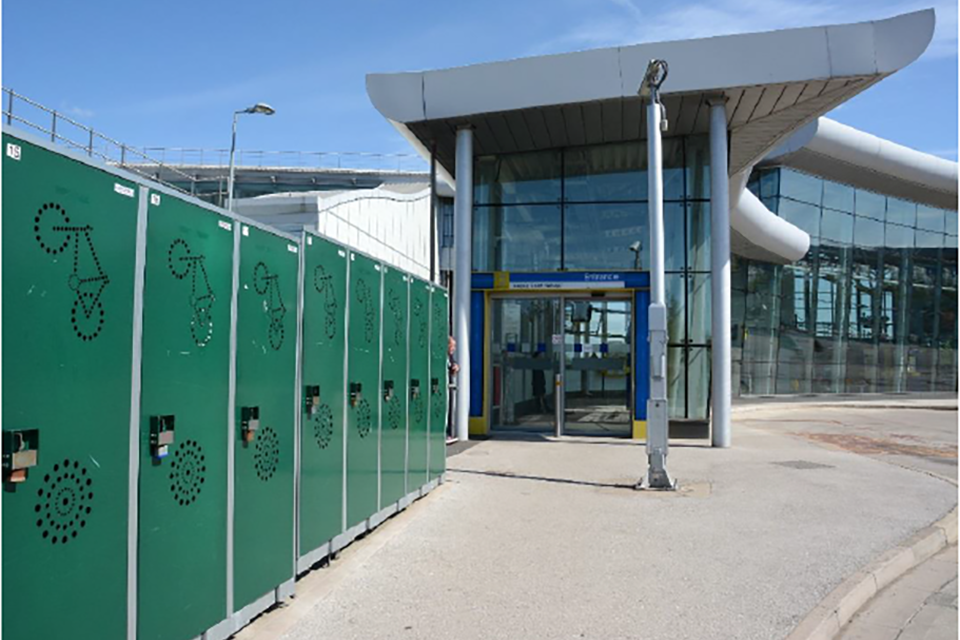Reducing security vulnerabilities at rail, bus and coach stations
Published 9 October 2017
The government’s National Security Strategy places the threat of terrorism to the UK as a tier one risk. This means it is one of the highest priority risks for UK national security, taking into account both likelihood and impact.
Recognising this, the Department for Transport (DfT) regulates and provides guidance on counter terrorism security regimes across the transport sector to protect people and infrastructure. This includes national rail, light rail (including tram and underground) and bus and coach services.
Local authorities have a key part to play (alongside government departments, the security and intelligence agencies, police, and transport operators), by ensuring that the public environment they manage adjacent to stations does not provide an attractive alternative terrorist target. Terrorists have been seen to target street environments that are both open and crowded places.
This guidance aims to help local authorities contribute to the safety and security of people using or nearby stations, through appropriate management of the adjacent public areas. This can also offer positive benefits in helping to reduce the risk of crime, fear of crime, and other anti-social behaviour. We encourage you to make full use of the advice in this document.
This guidance is relevant to areas adjacent to national rail, light rail (including tram and underground), bus and coach stations, termini and passenger transport hubs.
Summary
An effective protective security regime must take account of the prevailing terrorist threat, the vulnerability of potential targets and the potential consequences of an attack. Together these identify the risks from terrorism to people, and infrastructure on or nearby transport networks.
The open nature of the environment in and around railway, bus and coach stations, presents a counter terrorism security challenge. The opportunity exists for local authorities to play an important part in providing a public environment in close proximity to stations, which cannot easily be exploited by terrorists.
Introduction
Objective and scope of this guidance
The protection of people and infrastructure from terrorism is a priority for government and transport operators. There is a range of security requirements and guidance already in place to help transport operators deter acts of terrorism, including removing potential concealment opportunities on their stations. Immediately outside the station boundary however, the public environment offers significant potential for further reinforcing and enhancing these security principles, to improve safety. This guidance draws on experience gained in developing and putting in place effective, proportionate, viable and sustainable measures across the land transport network. It suggests ways in which local authorities can maintain a good level of security in areas adjacent to stations for which they are responsible.
Who the guidance is for and how to use it
This document promotes and encourages counter terrorism security good practice for local authorities. It is for local authorities to use in relation to public areas that they manage adjacent to stations. It is particularly relevant to local authority officers working with station operators, planning, construction, street care, parking enforcement staff and those who engage with Highways Departments. It will also be useful to railway, bus and coach operators, and those undertaking design and construction work on their behalf.
Role of the Department for Transport
DfT regulates and provides guidance on counter terrorism security regimes across all transport modes. On open public transport networks (where passengers and their belongings do not go through security screening), the security regimes are risk based and designed to be proportionate and practical so as to minimise the impact on the operators’ ability to provide a public transport service. The regimes also aim to deter would-be terrorists and to reassure those who work on and use public transport.
We originally provided information to local authorities in 2003 on security considerations for areas outside stations through our Guidance to Local Authorities: Railway Stations – Security Vulnerabilities Outside Railway Stations. The 2017 document sets out the latest good practice security measures and replaces the 2003 guidance.
Role of local authorities
The Department for Communities and Local Government (DCLG) provides a planning practice guidance web-based resource. This emphasises that designing out crime and designing in community safety should be central to the planning and delivery of new development. Section 17 of the Crime and Disorder Act 1998 (England & Wales) requires all local authorities to exercise their functions with due regard to their likely effect on crime and disorder, and to do all they reasonably can to prevent them. Taking proportionate security measures should be integral to the planning and delivery of new developments and substantive retrofits. Crime includes terrorism, and good counter terrorism protective security is also good crime prevention. Having effective security measures in place will contribute to wider public safety and confidence.
Protective security is only one feature of the public environment. It is important that everyone involved in managing public spaces takes a holistic approach that includes other considerations such as creating spaces for people to enjoy, that are visually stimulating, and ensuring that the public space is functionally usable and safe. This DfT guidance document is relevant to a number of local authority functions:
- Planning
- Transport
- Highways
- Environmental services
Nothing in this document is intended to override any safety and environmental requirements placed on local authorities.
Counter terrorism security guidance for light rail, bus and coach stations
- Bus and coach security best practice
- Light rail security best practice
What we are asking local authorities to do
Principles of good counter terrorism security management in the vicinity of stations
Security measures inside stations are generally a combination of front line physical measures and procedures. An example of a physical security measure is hostile vehicle mitigation, for example, bollards.
We ask that you consider the following principles in the public environment outside a station. These are simple, cost effective ways of improving security and provide a number of positive benefits.
Planning stage:
- liaise with the appropriate security lead for the station operator and the British Transport Police (local police force in the case of tram, bus and coach stations) regarding the location of street furniture and other amenities (for example, litter bins, bicycle racks, CCTV coverage, hostile vehicle mitigation measures), and share good practice security thinking
- apply appropriate on and off street parking controls in the vicinity of stations
- tell station operators in advance about any street construction work plans that may impact on the counter terrorism security of the environment outside their station
- be receptive to requests from station operators on counter terrorism security related concerns, such as the location of street furniture outside their stations, or the broadcasting of security messages within stations
Operation stage:
- review the area revisiting your litter/waste management arrangements; eliminating any unnecessary areas of concealment; and assessing what ‘clutter’ you can do without (this approach should not be applied to existing Hostile Vehicle Mitigation measures or those elements of street furniture that can help to deter a ‘vehicle as a weapon’ attack against predictably crowded spaces)
- reduce areas of potential concealment in your control arising from construction work near stations, poorly lit areas outside the station and street vendors’ stalls
- be vigilant - ask your staff and contractors, for example, street cleansing teams and council parking enforcement staff to look out for and report to police:
- unusual packages, suspicious vehicles and their contents, unattended bags
- people acting unusually (for example, showing interest in restricted access areas or the placement of CCTV cameras)
Vigilance of local authority staff
Staff and public vigilance is key to strengthening protective security. It increases public confidence in using public spaces, transport networks and facilities. We encourage staff to report any unusual items, unusual behaviour or suspicious vehicles and their contents to the police. This can also offer positive benefits in helping to reduce the risk of crime and anti-social behaviour within the environment you manage around stations. The Centre for the Protection of National Infrastructure (CPNI) has developed an approach to help you develop vigilant behaviours in your staff. This in turn will help them become an active part of your security culture.
Local authority staff and contractors, such as street cleansing staff, parking enforcement and refuse and recycling collectors can play an important role by being vigilant and knowing how to report something of concern. Should your staff come across a suspicious item or notice someone behaving in an unusual manner, it is important that they know they should report this to their supervisor, the station operator and/or the police as soon as possible. Local authorities should liaise with contracting companies to ensure their staff are also suitably briefed on security, including how they go about reporting suspicious items and behaviour and to whom.
Hostile Vehicle Mitigation
Hostile Vehicle Mitigation (HVM) such as a correctly spaced array of bollards, planters, street furniture and walls are key front line measures to protect infrastructure (including high profile railway stations) from a potential Vehicle Borne Improvised Explosive Device (VBIED) or a vehicle being used as a weapon to deliberately target pedestrians.
Useful resources:
- Protecting Crowded Places: Design and Technical Issues
- CPNI hostile vehicle mitigation
- National Counter Terrorism Security Office
- DfT land transport security document collection
CPNI protects national security by providing protective advice on physical security, personnel security and information assurance. They have also helped produce Traffic Advisory Leaflets giving advice on the planning and design of HVM schemes including their effects on pedestrian flow. Use of these documents will help ensure that measures are holistically planned and contribute to a safer wider public environment, without installing cluttered or unattractive street furniture. Please contact DfT Land Transport Security Team if you would like further information on the impact test standards for HVM at stations: landsecurity@dft.gov.uk.

Posts in the pavement (hostile vehicle measures) outside government buildings in Westminster

Concrete blocks at the Tower of London with tourists sitting on them and eating - alternative hostile vehicle measures
Litter and recycling bins
Litter bins have been used by terrorists to conceal explosive devices. Bins made of metal, concrete or plastic can add to blast fragmentation, which could cause serious injury and structural damage should an improvised explosive or incendiary device (IED or IID) be hidden inside. Bins can also be used for hiding stolen items.
The most secure design of bin is a clear plastic sack (tinted sacks are acceptable, provided the colour does not obstruct easy viewing of the contents), suspended from a metal hoop sack holder with integral bungee strap(s) to secure the plastic sack. They should not have a lid, unless rubberised. The hoops should be attached to concrete or brick walls, or a wooden or single section steel or stainless steel metal post.
We encourage you to keep the number of bins outside railway, bus and coach stations to the lowest practicable level and to avoid, if possible, positioning them directly next to station entrances/exits, HVM bollard arrays, evacuation routes and nearby sources of possible secondary fragmentation, for example, windows. Another option would be to consider using blast resistant litter bins or hoops, provided they are not located under sources of fragmentation such as a glass canopy. You should also consider actively engaging with station operators on your proposals to install or move bins, or to alter their design.
If placing bins outside the exit/entrance of a station cannot be avoided, try to place them on one side of the entrance rather than both sides. This will keep a route clear in the event of the station having to be evacuated due to any emergency alert. Having fewer bins close to station exits/entrances also lowers the risk of secondary IEDs or IIDs being placed in these areas.
Regular emptying of litter and recycling bins could help in the earlier finding of any concealed IED or IID, and has the added benefit of helping to make the area more attractive to the public.

Clear plastic sack, unobstructed from view, suspended from a metal hoop sack holder and attached to a brick wall.
We recommend the following
Planning stage
Do:
- use clear plastic sacks suspended from a wall-mounted frame or free-standing wooden/metal post, or a blast resistant bin
- keep the number of bins to the lowest practicable level
- liaise with station operators on the positioning of your bins
Avoid:
- using metal or other bins which could add dangerous fragmentation
- placing bins directly outside station entrances or exits, in the way of evacuation routes, nearby sources of possible fragmentation, such as overhead glass canopies, windows, mirrors, fire hydrants or electrical equipment
- placing bins at Rendezvous Points (RVP) and Staff Assembly Points. For London Underground, these sites are all clearly marked. Railway, bus and light rail station operators can advise you of these points for each of their stations
Operation stage:
Do:
- check and empty bins regularly
- monitor the usage of bins to identify and remove those that are not really necessary
Avoid:
- allowing bins to overflow. Ideally they should be emptied when no more than half full

London Underground rendezvous point.
Bulk rubbish containers and compactors
Bulk rubbish containers and compactors (including wheelie bins and skips) are an easy and convenient way of concealing an IED or IID. If they are sited in public areas adjacent to stations, they should be fitted with locks, kept secured, emptied and checked regularly. A set of bin keys should be kept with the relevant station operator where possible to ensure bins can be locked or unlocked quickly and easily for checking in the event of a security alert.
Street vendors
We recommend that when deciding on the location of local authority licensed street vendors in the vicinity of a station, (for example, flower sellers, newsstands, food and refreshment stalls), you take account of the potential impact on station evacuation routes, assembly points, exits or entrances, and the possibility of inadvertently creating additional concealment opportunities for terrorist devices.
Bicycle storage
An increasing number of people cycle to and from stations. DfT works closely with railway station operators, and British Transport Police Counter Terrorism Security Advisers (CTSAs) to ensure that counter terrorism considerations associated with cycle storage are factored into new installations, station upgrades and redevelopments from the earliest stage of planning. The aim is to minimise the potential introduction of concealment opportunities that could be exploited by terrorists (as well as mitigating other criminal activity), deliver proportionate protective measures with a minimum of inconvenience to the public, and to enable cycle facilities at or in the vicinity of railway stations to be provided, located and security managed appropriately.
Please liaise with DfT Land Transport Security Team and local station operators regarding the design and placement of any cycle storage facilities you are planning to install near a station.
Bicycle racks
Bicycle racks should be positioned with regard to the safety of people and facilities. It is good practice, where possible, to avoid placing them directly opposite station entrances, exits or evacuation routes and not directly next to large windows. Derelict and abandoned bicycles should be removed once adequate notice of removal has been given. There is great value in you actively engaging with station operators on any proposals you may have to install, move or alter the design of bicycle racks, to ensure security considerations are taken into account from the outset.
Bicycle lockers
Bicycle lockers also bring associated security risks. As with bicycle racks, positioning can minimise those risks, and we encourage you to follow the recommended mitigation measures above, and to liaise with station operators on any proposals to install lockers in the vicinity of stations.
Lockers should be secured with a padlock and key or any other equivalent measure designed to prevent unauthorised access. Consideration should be given to how the police will be given access to check lockers at short notice in the event of a security incident or alert. Lockers with mesh sides or adequate vision ports (to permit good visibility of the interior during low light conditions) sufficient to ensure that the whole locker interior can be inspected from outside without the need to open it, are preferable and can assist in checking.
These measures have the added benefit of reducing opportunity for criminals to conceal stolen goods or drugs in bicycle lockers, reducing general crime rates and enhancing overall personal security for staff and the public.

Bicycle lockers with vision ports allowing the interior of the locker to be inspected.
Agreement of final positioning of facilities
Once the positioning of HVM, bins, street vendor facilities or bicycle storage areas has been initially considered, you should engage with the relevant station operator to agree final plans. One option is to carry out a joint risk assessment, overseen by the appropriate station security committee.
Parking control and enforcement
It is important to be aware of the potential threat from VBIEDs. Where larger stations have vehicle access control measures in place, there is a risk that VBIEDs may instead be targeted at the ‘softer’ environment immediately outside the station.
We recommend that council parking enforcement staff remain vigilant of public parking (on and off street) in the vicinity of stations to ensure that vehicles parked near to station buildings or station entrances and exits are not left longer than their authorised time. Staff should be reminded of the importance of reporting suspicious vehicles to the police.
Street environment
Much of the existing street infrastructure in and around stations was designed and built at a time when security was not such a prime consideration as now. These could provide potential areas of concealment and facilitate crime and anti-social behaviour. As with bicycle storage facilities, putting the right security measures in place at the earliest opportunity has the added benefit of reducing general crime rates and enhancing the personal security of staff and the public.
Whilst it may not be possible to eliminate all areas of concealment, it is possible to take some straight forward and cost effective measures to reduce them, such as installing additional or better lighting in any darker areas (for example, street areas under station viaducts, or on poorly lit station access routes) to improve visibility and help reassure the public about their personal security.
Those involved in designing or refurbishing can help ‘design in’ security enhancing features from the outset. Some good practice examples are explained below. This also helps with wider crime reduction and reducing anti-social behaviour.
Vending machines
If these are fitted flush to walls or back to back with other machines, nothing can be easily hidden behind them or around any sides. In addition, it is good practice to board or seal up voids that cannot be removed, such as underneath vending machines, or to fit curved tops so that nothing can be placed directly on top.
Planters
If planters or garden features are going to be placed adjacent to a station, designing them to make it impossible to hide anything underneath (either no gap, or a gap so big that anything put there is visible from all sides) is recommended and planting should not be so dense that it provides an opportunity for concealment of devices. Suitably designed and located planters can form part of HVM measures in place around a station.
Equipment boxes
We recommend that all equipment boxes, such as sand and grit bins, are kept shut and secured to prevent anything being concealed inside. One of the best ways of doing this is with tamper evident seals (for example, plastic/wire seals, stickers).
CCTV
Closed-circuit television (CCTV) has a deterrent value and can be used to cover areas outside stations that terrorists and other criminals could exploit.
It may be possible to agree with station or transport hub operators on the positioning of your respective systems to ensure that there are no potential gaps in coverage, and to facilitate detection of crime and other anti-social behaviour.
Provision of street lighting should be effective and fit for purpose. Consideration needs to be given to its colour rendition, uniformity and its support of any CCTV system that is in place.

CCTV Control Room Copyright © Centro
Construction work near stations
We ask you to notify station operators about any on-street or other construction work planned to take place in the vicinity of a railway, bus and coach station, and its expected duration. Together you can consider appropriate controls that you could put in place to secure the site out of hours, or when it is unattended, so as to ensure that there are no gaps in any fencing or barriers around the site that could allow unauthorised out of hours access or opportunities for placement of an IED or IID or other criminal activity. We also ask that you ensure that your contractors undertaking street works in the vicinity of stations are made aware of the additional security sensitivities of the location to be taken into account.
Community Safety Partnerships
Community Safety Partnerships (CSPs) work together to protect their local communities from crime and to help people feel safer. They work out how to deal with local issues like anti-social behaviour, drug or alcohol misuse and reoffending. They assess local crime priorities annually and consult partners and the local community about how to deal with them.
Liaison with transport operators
For the purposes of counter terrorism security, we ask you to cooperate with, and be receptive to, requests from transport operators to re-position street furniture, such as litter and recycling bins, bulk rubbish containers, bicycle racks and bicycle lockers. Working together on this will help create an uncluttered environment that reduces risk for everyone’s benefit.
A number of railway stations are required by DfT to have a Station Security Committee, which provides a forum for discussion on security matters affecting the station. Station operators must invite all interested parties, including the relevant local authority, to attend these Committees. We ask that you remain open to any such invitations and for your active involvement in meetings. This will support both you and the station operator in addressing the areas covered in this guidance, often at an early stage.
Many railway stations are also required by DfT to broadcast audible security messages to station users. We are aware that in some cases local authorities may seek to impose restrictions on station messaging, particularly late evening/early morning so as not to disturb local residents. If such restrictions are in place or being considered, station operators may make representations to you to seek an exemption at times of higher security concern. If so, we ask that you be receptive to such requests.
Advice on land transport security
If having read this guidance, you require further land transport security related advice, please contact the DfTs land transport security team:
Department for Transport
Great Minster House
33 Horseferry Road
London
SW1P 4DR
Switchboard telephone: 0300 330 3000
Alternatively, you can get in touch directly with the relevant station operator.
Local police forces can provide you with specific advice. Each police force has a Crime Reduction Unit, Crime Prevention Design Advisor (CPDA) and a Counter Terrorism Security Advisor (CTSA) - all of whom are good sources of free advice and assistance, and will be able to assist you in determining suitable security measures for installations in the vicinity of stations. Additionally, CTSAs promote awareness of the terrorism threat and develop positive ongoing relationships with the local business community, partner agencies and site owners to encourage a coordinated approach.
You may find it helpful to contact other local authorities or transport operators and infrastructure owners or managers to consider sharing best practice and to discuss mutually beneficial security measures.
